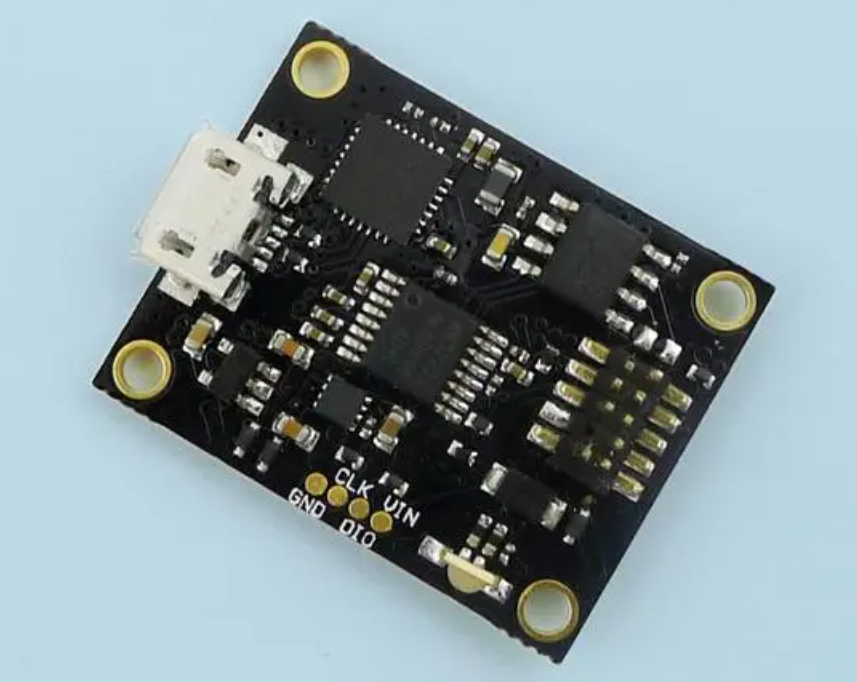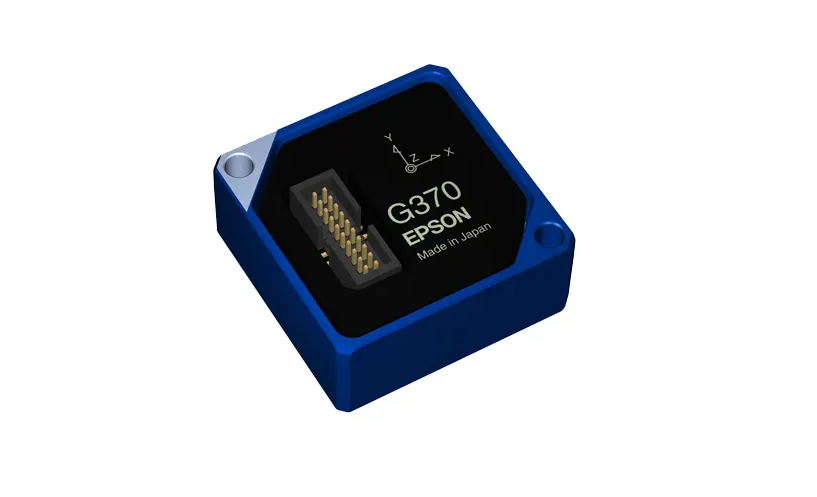By Panasonic 142
With the accelerated evolution of a new round of scientific and technological revolution and industrial transformation, infrastructures such as 5G, artificial intelligence, and the Internet of Things are becoming more and more perfect. Connecting the basic technology and terminal applications of the new generation of information technology—smart sensors with MEMS as the core are becoming more and more important. in the stage of explosive growth.

IMU is an inertial sensor that has emerged with the continuous development of sensor technology and microelectronics technology. It belongs to a type of MEMS and is a highly integrated technology. Unfortunately, due to the low cost of sensor production, the market is flooded with low-precision products for gaming and consumer electronics, rather than high-precision professional-grade equipment.
Therefore, in this article, we describe the technology and applications of IMUs, and enumerate scientific-grade solutions that can be applied in the field of sports and rehabilitation.
What is an inertial sensor (IMU)?
An inertial measurement unit (IMU for short) is a device that measures the three-axis attitude angle (or angular rate) and acceleration of an object. Gyroscopes and accelerometers are the core devices of inertial navigation systems. With the built-in acceleration sensor and gyroscope, the IMU can measure linear acceleration and rotational angular rate from three directions, and obtain information such as the attitude, velocity and displacement of the carrier through calculation.
In sports, inertial sensors, consisting of accelerometers to measure force and acceleration, gyroscopes to indicate rotation, and magnetometers to measure body posture, collect data across three axes and capture the subtle movements of the athlete .
The accelerometer detects the acceleration signal of the object in the independent three-axis of the carrier coordinate system, which is very important for the analysis of the whole body motion of the human body.
Gyroscopes can be used to determine the orientation of an object in three-dimensional space, mainly measuring the angular velocity around three axes, namely pitch (X axis), roll (Y axis) and yaw (Z axis). Combining multiple sensors connected together can simulate the movement of the whole body.
The magnetometer helps with orientation, it can be used to calibrate and direct the data to the correct location, it's not as important as the other two sensors, but they add another layer of data suitable for outdoor sports.

What applications are IMU sensors suitable for?
IMU has been used in the field of sports for some time, and it can be roughly divided into public applications and scientific research training applications.
Apps for the masses
In terms of mass applications, zepp, Kulang and other products that appeared in the market before are all based on IMU for action recognition in badminton, baseball, tennis and other fields. In wearable devices such as sports bracelets, there are also cases where IMU sensors are used for step counting.
This type of product can interact with the user's mobile phone, use the inertial sensor to collect real-time data and upload it to the mobile phone, upload the data to the cloud through the mobile phone for data analysis and calculation or directly perform data calculation in the mobile application, after the movement is completed The data calculation results are visualized through the mobile APP, so that users can understand their own sports conditions.
This type of product usually consists of only one IMU sensor, and the product is light and practical. However, the current products are also facing problems. In terms of product quality, since there is only one sensor, this type of product may face insufficient accuracy of motion recognition, so that it cannot provide sufficiently accurate calculation accuracy, resulting in the inability to meet the daily needs of users. customer satisfaction.
Applications for research and training
In terms of sports research and training, users usually have higher requirements, and usually require sensors to have better accuracy. Therefore, such products generally provide multiple sensors and use them with high-precision algorithm analysis.
In the field of sports scientific research, inertial sensors are mostly used as a real-time motion measurement tool that reflects the state and characteristics of motion. Researchers analyze the collected data in time domain, frequency domain and other purposeful algorithms to find problems and rules in motion. etc., its use has been relatively mature.
In the field of training, the use of inertial sensors is beginning to appear. In some foreign sports such as skating, skiing, etc., inertial sensor products have appeared and been promoted. Inertial sensor products can allow athletes to know first-hand information about their own sports status, and provide a reference perspective for the improvement of their own sports skills. The same applies to coaches.
However, there are also many problems, such as the accuracy of sensor calculations, calculation methods for different sports, and applicability in different sports. For example, wearing a sensor on the wrist during tennis training, long-term use may change the trajectory of the athlete's ball hitting action due to changes in the weight of the wrist, and the weight change that may occur when the sensor is removed during the game will affect the stability of the action.
Features and functions of hardware and software
One of the strengths of an IMU is the convenience of collecting motion data. Its hardware system is usually wearable, which means it must be small, lightweight and have a long battery life. And, what makes IMU motion sensors unique is that they can be programmed and designed to solve practical problems in training, allowing fine-grained analysis of an athlete's movements.
At the same time, the data from the IMU is continuous, real-time, and can provide real-time feedback. While complete IMU motion capture systems are mostly still based on computer software analysis, some small devices can already be connected wirelessly to a tablet or smartphone.
Most of the accompanying software programs for IMU sensor evaluation system solutions in the sports industry are web applications for managing team data, and also provide APIs to connect to other platforms (such as athlete management systems).
How should we choose?
Facing the various IMU sensors on the market, how should we choose? If you are a sports researcher or a professional sports performance analyst, then Xsens, the main innovator of inertial 3D motion tracking technology and products, will be your first choice.
MCube, the parent company of Xsens, is a company that mass-produces single-chip MEMS+CMOS motion sensors. Its manufacturing technology of realizing MEMS accelerometers and CMOS signal processing ASICs on a single chip is protected by multiple patents. The sensors it produces are as small as sand Granules are the leaders in the sensor 3.0 era.
Research Grade Choice - Xsens MVN Analyze
Xsens MVN Analyze is an advanced three-dimensional inertial motion sensing package consisting of Xsens inertial sensors and MVN software, which can adapt to almost any environment. The unique technology can even shield the influence of magnetic fields, and it is still stable even in complex electromagnetic environments.
The industrial-grade miniature inertial sensors developed by Xsens can capture very small vibrations, as well as large movements, and can provide precise position data. In order to adapt to different application scenarios, the MVN Analyze suite is also configured with two different hardware systems. The lightweight and easy-to-wear MVN Awinda consists of 17 wireless inertial sensors MTw, and the MVN Link, which has a high sampling rate and can be used for high-frequency motion capture, consists of 17 wired inertial sensors MTx.
Developers' Choice - Xsens DOT
Xsens DOT is a wearable inertial sensor development kit designed for developers/innovators/integrators to analyze and report the development of human kinematics platforms. The interior is composed of an acceleration sensor chip, a gyroscope sensor chip, and a magnetic sensor chip. It interacts with mobile devices (mobile phones, iPAD, Android Pad) through low-power Bluetooth. The sensor is powered by a tiny button rechargeable battery.
If you are a developer in the field of human kinematics, Xsens DOT will be one of your ideal choices.

For underwater sports research - Cometa Wave track
Based on the accumulation of electronic engineering technology for many years, Italy Cometa Systems launched the 9-DOF inertial motion capture sensor WAVETRACK in 2015. After special waterproofing process, it has reached the IP68 waterproof level and does not require additional waterproof protection measures. It is very suitable for swimming , diving, underwater training, underwater rehabilitation and other application scenarios.
New demands bring technological innovation, and technological innovation leads to new products. The usefulness and reliability of the MU motion sensor as a powerful tool for human dynamics and kinematics data collection has been generally accepted as a standard by the sports and medical communities. Its value lies in the fact that professional data analysis can meet the needs of different segmented sports markets. Well-trained sports professionals can use IMU tools in combination with other systems to determine the data standards they collect using sensors, so that big data can be used for training and rehabilitation. And sports scientific research with scientific wings.